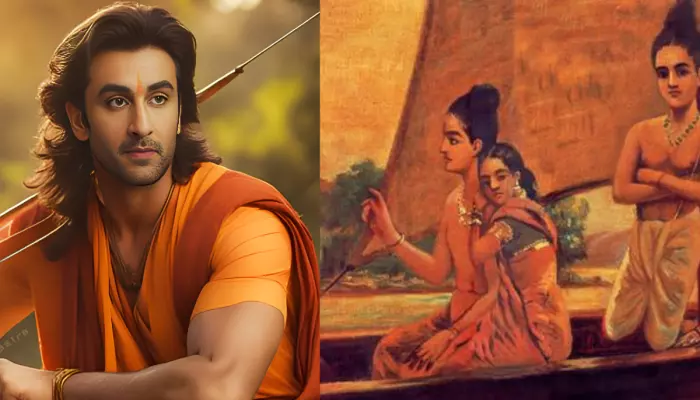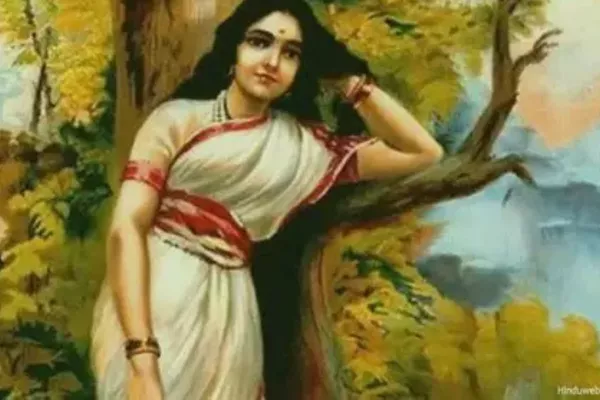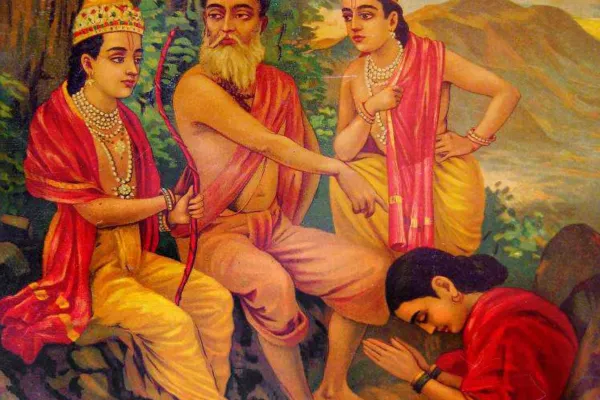About Us
Advertise With Us
RSS Feed | Content Syndication
Terms & Conditions
Privacy Policy
Contact Us
BollywoodShaadis.com © 2025, Red Hot Web Gems (I) Pvt Ltd, All Rights Reserved.

The Ramayana is often portrayed within the frames of a familiar story arc: the divine prince 'Rama' rescues his wife 'Sita' from the demon king 'Ravana' with the help of loyal allies like 'Hanuman' and 'Lakshmana'. Yet within the epic lie dozens of subplots, side characters, and powerful allegories. Some are buried in regional retellings, while others are subtly woven into the mainstream narrative. Here are six lesser-known but profoundly impactful stories from the Ramayana that deserve to be revisited in the upcoming Ramayana starring Ranbir Kapoor.
'Ahilya', the wife of sage 'Gautama', was a woman of exceptional beauty and devotion. But her story took a tragic turn when she was deceived by 'Indra', the king of the gods. 'Indra' disguised himself as 'Gautama', and approached 'Ahilya', and she, momentarily confused, succumbed to him. When the real 'Gautama' discovered the betrayal, he cursed 'Indra' and turned 'Ahilya' into stone for her perceived lapse in chastity.

Centuries later, as 'Rama' passed through 'Gautama's' ashram during his exile, he stepped on the stone and broke the curse. 'Ahilya' was restored to human form and purified. This moment in the Ramayana is a metaphor for redemption and divine grace. It also subtly critiques the moral rigidity of ancient society regarding women and blame.

In modern interpretations of the Ramayana, works like Volga's The Liberation of Sita and Maithili Sharan Gupt's poem Ahilya show, 'Ahilya' refusing to speak after the curse is lifted. 'Ahilya's' silence after being liberated is a sign of strength, and a quiet act of resilience, rejecting the injustice of her curse and reclaiming of female agency. Rather than reuniting with her husband, she stands as a symbol of dignity, choosing her silence over submission.

'Ahiravan', was the lesser-known brother of 'Ravana', he was a sorcerer and ruler of Patala (the netherworld). In some versions of the Ramayana, especially in eastern traditions like the Krittivasi Ramayan of Bengal, 'Ahiravan' emerges as a formidable threat during the war in Lanka. 'Ravana', who is desperate to turn the tide against 'Rama', summons 'Ahiravan' to kidnap 'Rama' and 'Lakshmana'.
Continue reading below

Using his magical abilities, 'Ahiravan' abducts them and takes them to his subterranean realm to sacrifice them to the goddess 'Kali'. But 'Hanuman', the ever-vigilant and potent ally of 'Rama', descends into the netherworld, defeats 'Ahiravan', and saves the brothers.

In some versions, 'Hanuman' even takes the form of Panchamukhi (five-faced) to kill 'Ahiravan' and extinguish five lamps at once, each representing a life force of the demon. The story of 'Ahiravan' showcases 'Hanuman's' courage and devotion, while also expanding the cosmology of the Ramayana beyond Earth and Lanka into spiritual realms such as Patala.

Tied to the story of 'Ahiravan' is the tale of 'Makaradhwaja', the son of 'Hanuman'. Even though 'Hanuman' is considered a Brahmachari (celibate), he had a son. The story goes like this: after Hanuman burned Lanka, a droplet of his sweat fell into the sea and was consumed by a Makara (mythical sea creature). From this droplet came 'Makaradhwaja', 'Hanuman's' son, raised in Patala under the guidance of demon-king 'Ahiravan'. He grew strong and became the gatekeeper to Patala.

When 'Hanuman' descended to rescue 'Rama' and 'Lakshmana' from 'Ahiravan's' clutches, he encountered 'Makaradhwaja'. Father and son met unknowingly before engaging in a combat. 'Hanuman' overcame him, revealed their relationship, and 'Makaradhwaja' joined 'Hanuman's cause. This encounter is rarely mentioned in the mainstream media, yet it adds emotional depth to 'Hanuman's' divine persona and shares a new side of him.

While 'Jatayu' is widely celebrated for his brave attempt to save 'Sita' from 'Ravana', his elder brother 'Sampati' is often overlooked. Once proud and mighty, 'Sampati' loses his wings while trying to save 'Jatayu' from flying too close to the sun. He falls to the earth, wingless and broken, living in obscurity.

When 'Hanuman' and the vanaras (monkey warriors) were searching for 'Sita', they encountered 'Sampati'. In Odia traditions, 'Sampati's' son carries the monkey soldiers on his back and, using his gift of sight, helps them locate 'Sita' in Lanka. As a result, 'Sampati's' wings began to regrow. It is a healing moment that remains absent in most mainstream accounts.

In some lesser-known versions of the Ramayana, especially the Adhyatma Ramayana, an interesting variation appears. According to this, before 'Ravana' had abducted 'Sita', 'Lord Agni' (fire god) replaced her with an illusionary version called 'Maya Sita'. The real 'Sita' was hidden in the fire's protection, while 'Maya Sita' endured captivity in Lanka.

After the war, when 'Sita' walks through the fire (Agni Pariksha) to prove her chastity, it is not just a test; it is a reunion. 'Maya Sita' is returned to the elements, and the real 'Sita' reemerges untouched.

This version adds theological depth to the story, presenting 'Sita' as divine and untouchable by evil. It also reframes the Agni Pariksha not as a judgment, but as a mystical restoration.

In a more fantastical subplot shared by Namaste Tales, 'Yama', the lord of death, came to take 'Rama', but 'Hanuman', guarding his door, didn't allow the lord of death to enter the palace. 'Rama', seeing this, dropped his ring into a deep crack and asked 'Hanuman' to retrieve it. 'Hanuman', the ever obedient, agreed immediately.

He dives in and finds himself in Naga-Loka (the serpent world), encountering countless identical rings, all belonging to 'Rama'. This mystical image underscores 'Hanuman's' loyalty towards 'Rama' and the ultimate truth of the world, that whoever is born must die. The story is rarely depicted on screen despite its symbolic resonance.

Is there any lesser-known tale from the Ramayana that you would like to see in the upcoming movie?
Also Read: Who Was Real-Life Legend Kannappa? Hunter-Turned-Devotee Of Shiva, Who Inspired Vishnu Manchu's Film
